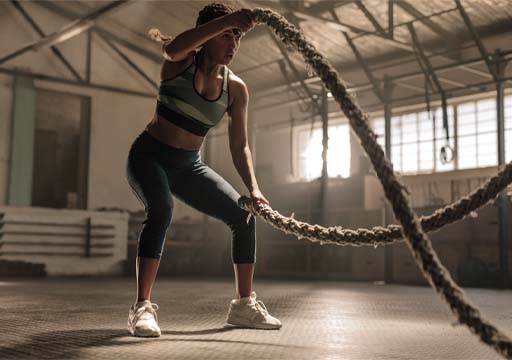7 From the pelvic floor to the gym floor
In the 1940s Dr Arnold Kegel [Tip: hold Ctrl and click a link to open it in a new tab. (Hide tip)] , who was a pioneer in pelvic floor health and exercise, developed a set of exercises which have come to be known as ‘Kegels exercises’. Kegels exercises are associated with the times before and after childbirth but are applicable to any female who has a pelvic floor. They should not be seen as being only relevant to those who are experiencing symptoms of pelvic floor dysfunction. However, as you’ve heard, locating and training the pelvic floor requires a lot of skill and control, and the exercises are very rarely done correctly.
Pelvic floor training can be done in two ways. The exercises can be done in isolation where you focus solely on the pelvic floor muscles, or they can be incorporated into exercises you do in training. This would involve activating the pelvic floor before completing an exercise and focusing on them during the movement.
To complete pelvic floor exercises National Association for Continence and The Mayo Clinic recommend the following:
- Locate the right muscles and practice contracting and relaxing them.
- Start by contracting the muscles for 5 seconds and then relax them for 5 seconds. Gradually work up to contracting and relaxing for 10 seconds.
- To give a full work out complete 10 quick contractions and relaxations, holding for 1-2 seconds and then 10 long hold contractions where you hold for 10 seconds and relax for 10 seconds. This ensures both fast and slow twitch muscle fibres are worked.
- This full work out should initially be completed at least once a day, with the aim being to work up to 3 times a day.
- Athletes should integrate pelvic floor exercises into their core training and strength and conditioning sessions.
There are also pelvic floor trainers available to buy, but the best advice is always to learn how to do your exercises correctly. If you need devices to help keep you motivated, then they may be useful, but they won’t necessarily be any more effective than using your own exercises. There’s also a very useful app called squeezy app, which is NHS recommended and is useful to ensure that the exercises are done regularly.
Finally, if after three to four weeks of diligently doing pelvic floor exercises daily the athlete has noticed that they are making no progress, it is advised that they check in with a specialist women’s health physiotherapist. This can be done via the directory in the squeezy app. This medical help is important so a physiotherapist can make an assessment of what might be preventing the progress, and then individualise a training programme and offer support.
Also, as an active female, if your pelvic floor is overactive and too strong it is advised that you consult a physiotherapist who specialises in pelvic floor health.

